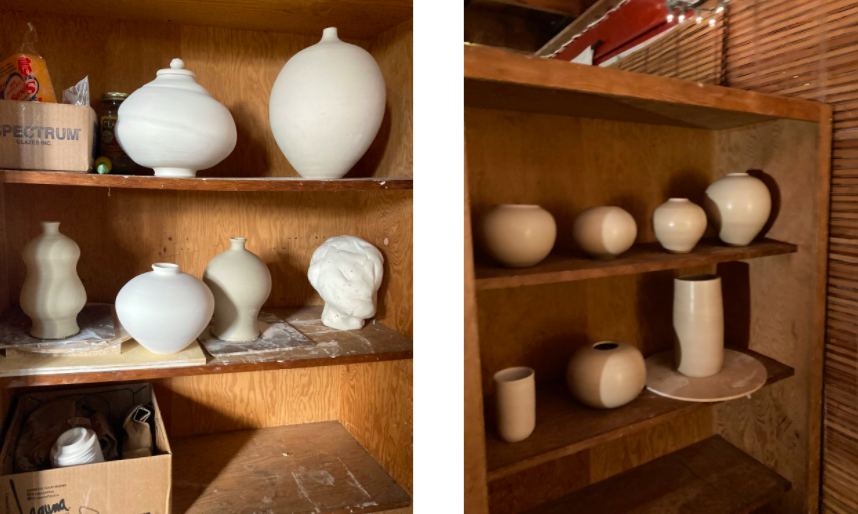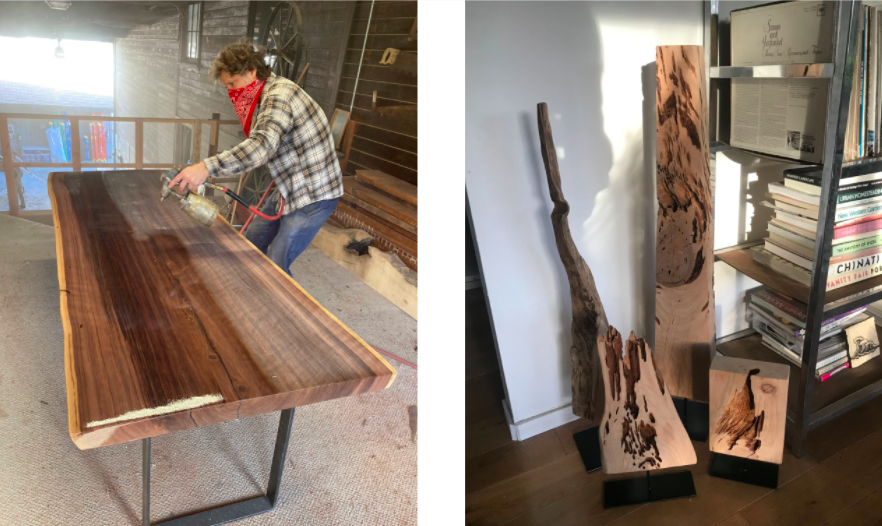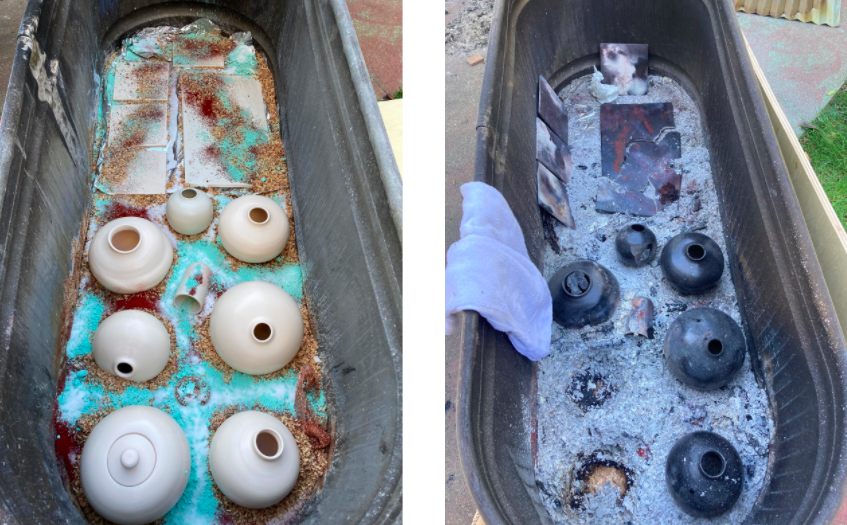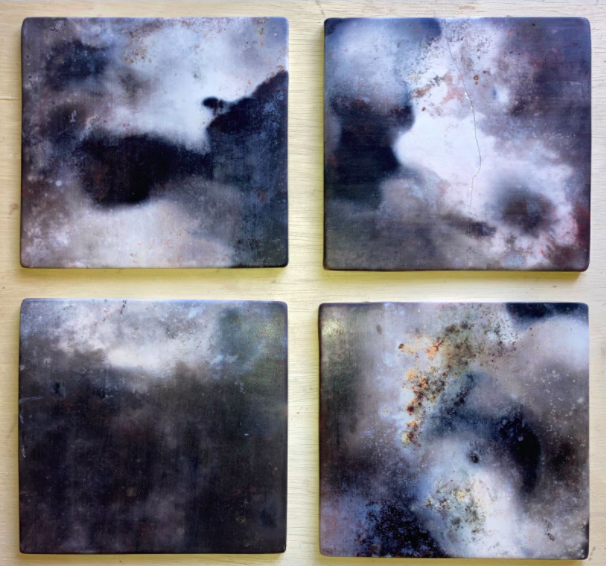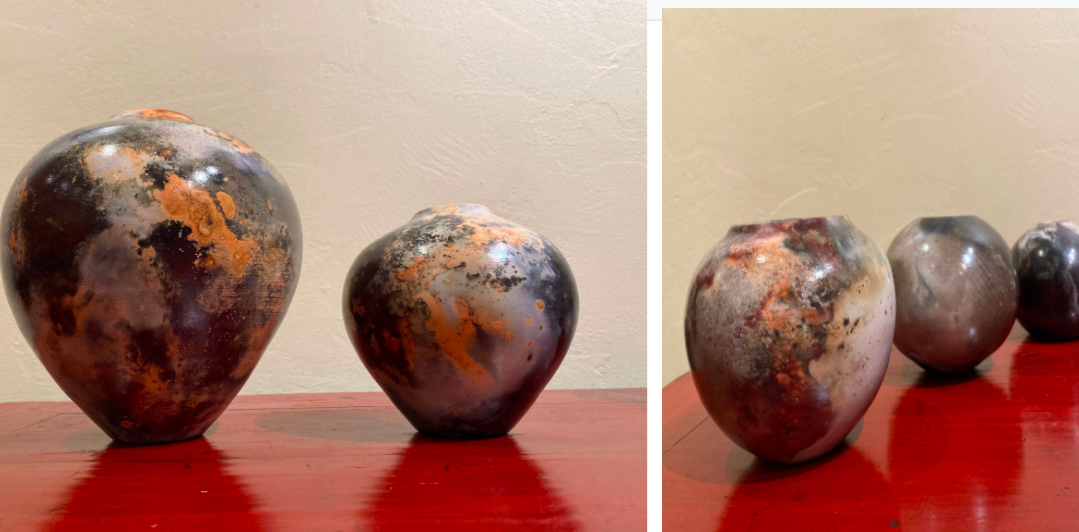2021 Senior Project Exhibition
Phoebe Wessel
Daniel Schwendinger
Ian A. Heaps
Ben Bloom
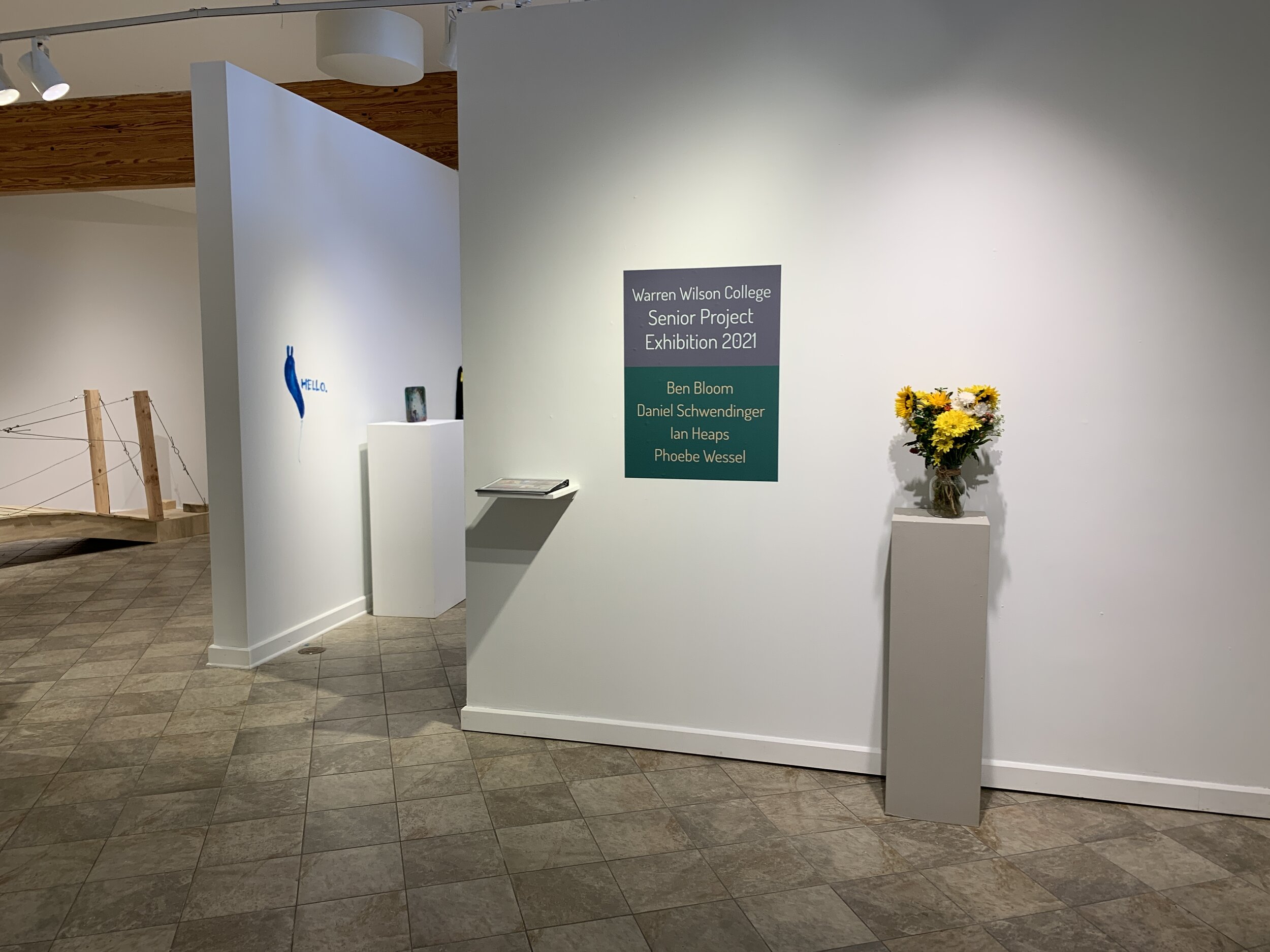
Soft Boiled | Phoebe Wessel
The perfect soft boiled egg is cooked for six minutes and thirty seconds. The edge of the yolk is just firm enough while the inside stays gooey. The color of the yolk remains the brilliant yellow orange when it is cooked to this point. I would make soft boiled eggs for my grandmother when I took care of her in the mornings of her last summer alive. I ate soft boiled eggs with my mother every morning this past summer. A perfectly soft boiled egg nestled perfectly inside an egg cup, scooped out with a tiny spoon feels like home and like comfort.
This past year has brought a lot of moments that required comfort. Experiencing loss and trying to figure out how to deal with grief have dictated many parts of my life. I have found myself creating work to bring myself comfort. I draw inspiration from people, places, objects and memories from my life that bring me relief from what has felt like the constant state of dread of this past year.
When the world throws things at us, we must adapt and figure out how to handle it all. I use nostalgia as a coping mechanism. When life is feeling particularly hard, I spend my time looking through old pictures from times where everything felt a little easier. I surround myself with reminders of joyous moments. Although looking through memories with people who are not here anymore can be hard, it feels good to remember moments of joy with them. It is poignant to not only remember those memories but to also to remember what it felt like to live in a world surrounded by my loved ones. It is easy to wish to be a child again, when there wasn't so much to worry or be sad about. It is easier to think about a time when people weren’t missing from your life. The things that bring me comfort are pieces of my life that have shaped me into who I am today. The heartache that I experience brings me back to these things over and over, trying to find peace.
I tend to work with these memories and feelings on a small scale because of how personal and special they are to me. Being able to hold a memory in your hand can make it feel closer and more tangible, even if it is many years old. I aim to create a sense of intimacy between my pieces and the viewer and invite them into my past moments of joy. It is easier to keep things with you constantly when you feel as though you could just keep it in your pocket.
My main medium of printmaking lends itself well to my use of repetition in my work. I like to use repetition to further accentuate the importance of certain things. Using similar or the same imagery throughout different mediums has allowed me to connect the various and sometimes disparate materials and connect them with the visual threads of symbols, or in some instances, totems. My work sometimes acts like a visual incantation - repeating, calling, speaking to my past, to find comfort in my present.
Something Beautiful Remains
(Author unknown)
The tide recedes but leaves behind
bright seashells on the sand.
The sun goes down, but gentle
warmth still lingers on the land.
The music stops, and yet it echoes
on in sweet refrains.....
For every joy that passes,
something beautiful remains.







Artist Statement | Daniel Schwendinger
I don’t know much. If I’m completely honest with you, sometimes I feel as if I don’t know anything. I lack many of my memories from my pre-college schooling; and everything else is based on life experience from my short time as an adult.
What I can tell you is that I am a product of trauma and frustration, steadily finding my way to a content existence through love, acceptance, therapy, medication, and art. Creating simply makes me happy. Bright colors give me joy. Simple shapes make me smile. Experimenting with all sorts of media fuels my desire to learn and grow as a human being; despite my unceremonious shove into adult life.
My work focuses heavily on recovery and growth. As a trans person with complex PTSD, much of my struggles have been centered around my own identity and humanity. Thus, I see power and joy in my steps to openness, and I aim to portray that heavily. Through trauma comes growth, and in my art, I wish to capture growth and life through the metaphor of decomposition. In addition, most of my portraiture revolves around myself. This is a show about myself; past and present, familiar and unknown. I desire and deserve to leave grace for them.
I work with paint and marker and clay and epoxy and yarn and fabric and words and sound and light and leaves and moss and fungus. I work to capture the transformation of life, from the phases of identity and the human body, to the mycelial cycles and death and decay of every living thing around us. I work to resonate with others who have endured pain. I work because I want to.

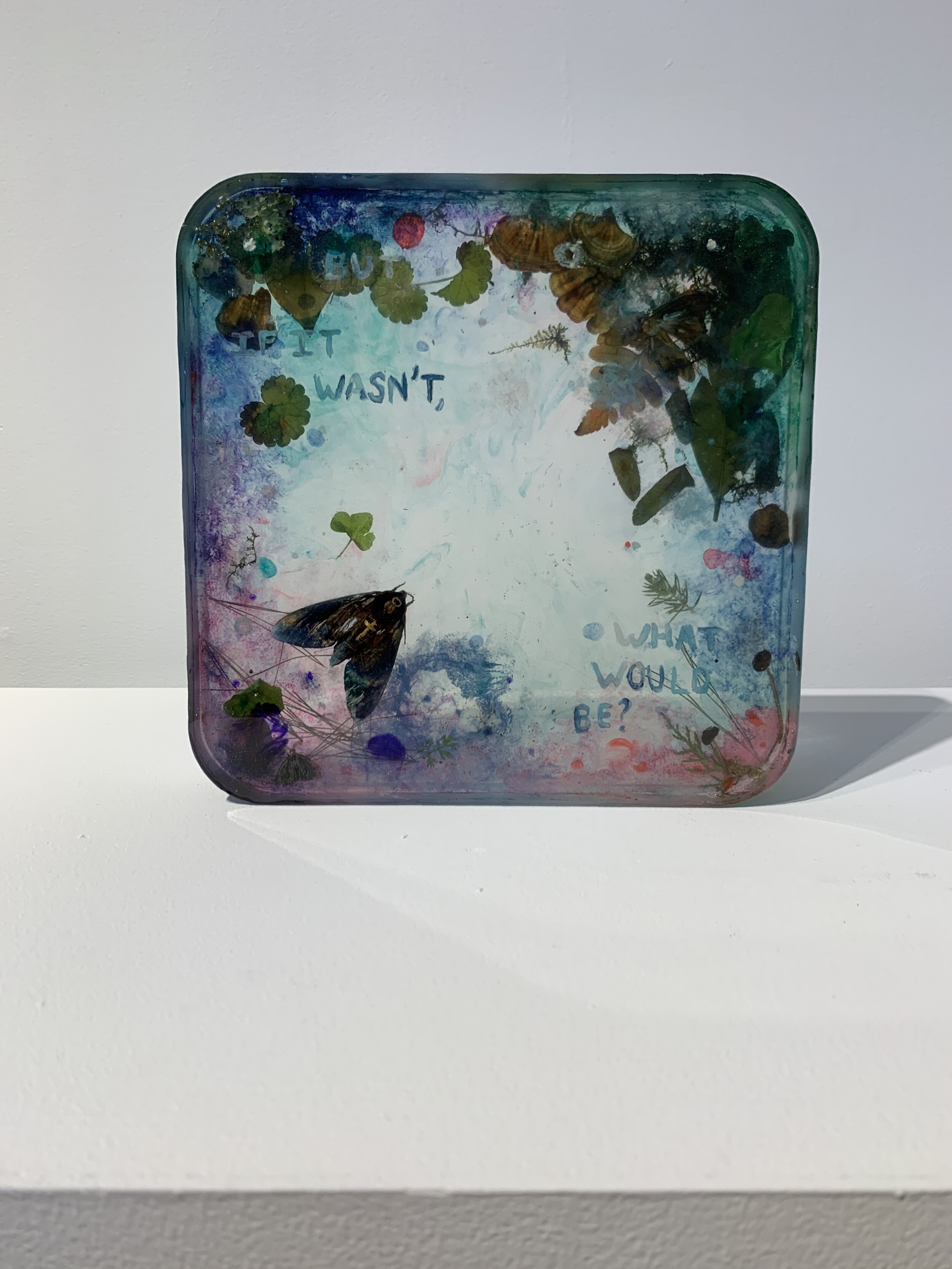



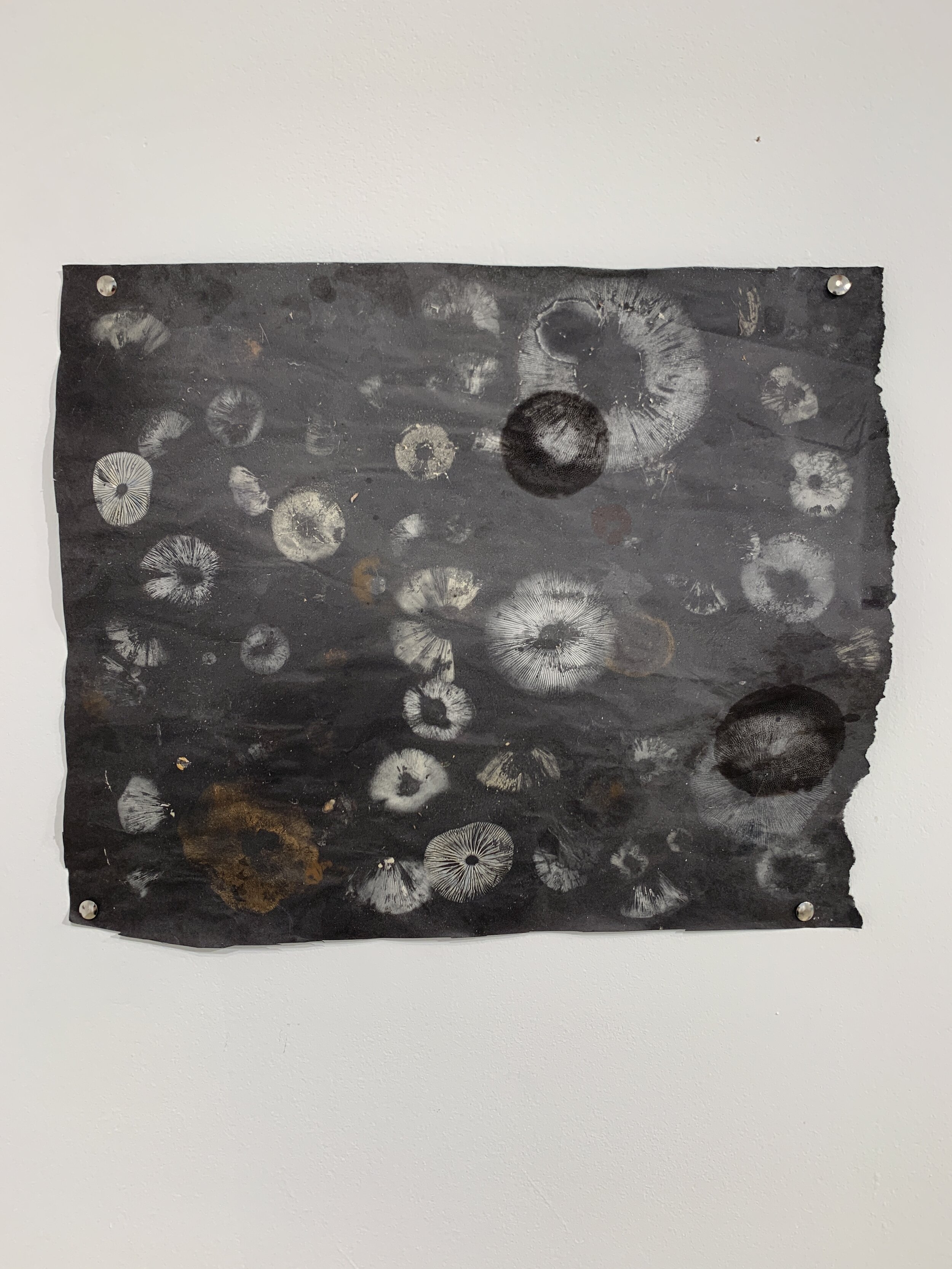

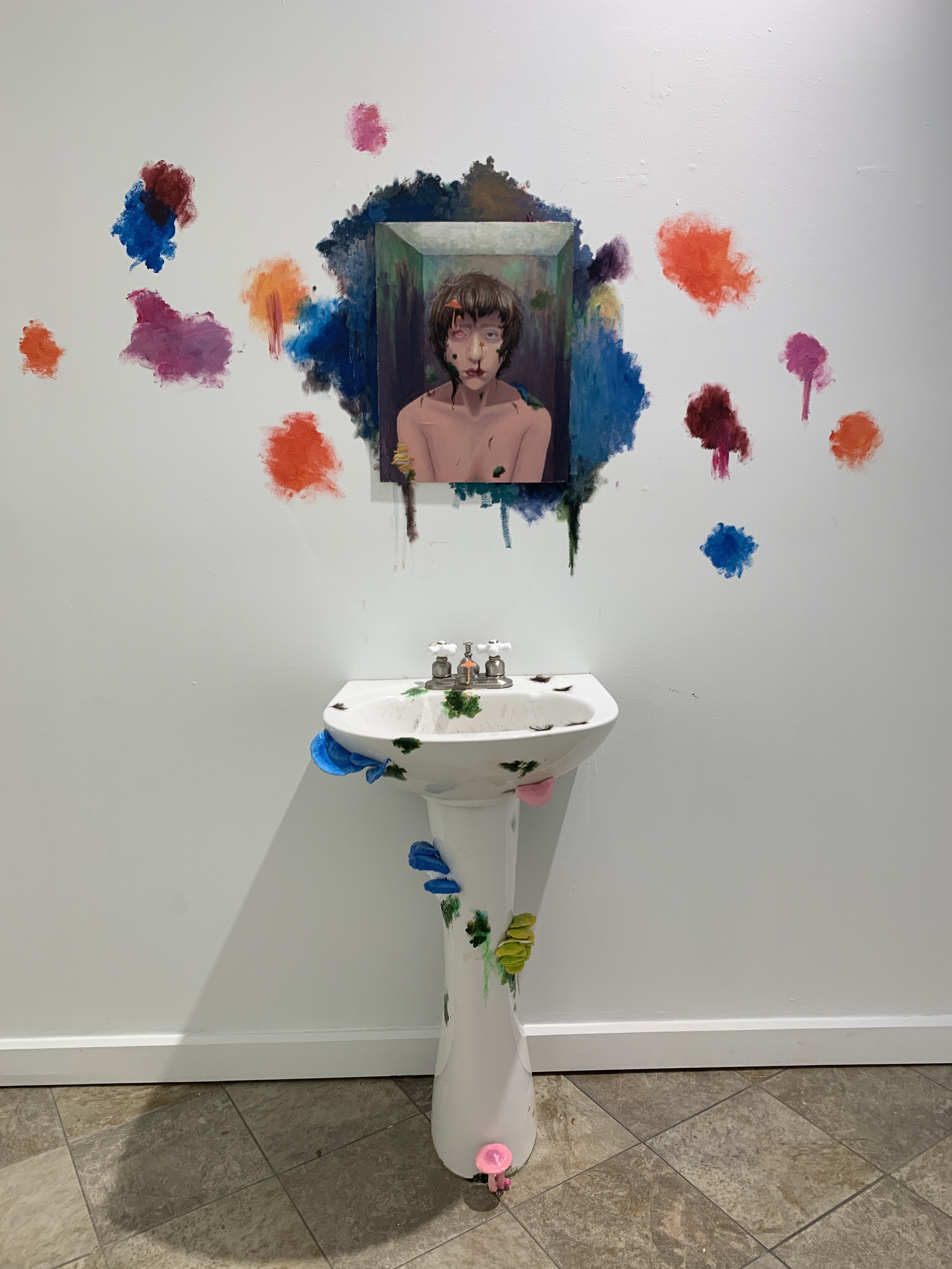

Support Systems | Ian A. Heaps
I create art to help me comprehend the thoughts and feelings I have in my life. I have recently started to think about my artwork as chapters of a story. The story shows my thought process surrounding my world and how I chose to perceive it visually. For me to want to create art, I must have a goal. Even if this goal is as small as, “I want to go shoot objects with sharp angles,” I feel that I am more successful with my work than if I was told, “walk around and take photos.” Keeping the idea of placing artworks as chapters in my mind helps me document nostalgic moments. It provides me with a mental list of how I overcame problems both with the piece itself and with my feelings surrounding it.
Without a purpose to make art, I feel misplaced and have difficulty figuring out why I create. With no direction, the objects that I am utilizing for my art start to lose their meaning; the photo paper being submerged in the developer turns into a flimsy $1 piece of paper with a picture on it or the piece of wood that I am carving turns back into something that a tree needed to die for. The objects start to turn into a physical representation of my emotions when I understand the meaning behind my actions. I often have difficulty accessing and verbally communicating these emotions. Creating allows me to sit and process these feelings before visually announcing them to my viewers.; it also helps me understand them for myself.
For this project, I decided to stick to my idea of support systems. I wanted to expand on my emotions and create something that visually showed the importance of support in my life. Without the assistance of my friends, family and mentors, allowing me to fail and guiding me back to my feet, I would not be where I am today. The bridge that I created represents everything that supports me. Ever since I was younger, bridges have fascinated me. In NY, I would often take the subway, drive or walk over the Brooklyn, Manhattan and Williamsburg bridge. Every time I would cross over a bridge, I would wonder how they were planned out, made and supported. While considering ideas for a final project, I recalled these times. I wanted to explore and think through how I could make my own bridge. Obviously, my knowledge of building bridges is nowhere near the complexity of any of these three bridges, but I was still curious to experiment on a smaller level.
I started my process by drawing and writing out my ideas and then created small models where I experimented with materials and aesthetics. I decided halfway through that I wanted to document my work through photography. Keeping my prompt of support systems in mind, I decided to walk around campus. I surveyed the land and noted where on campus I had felt some type of connection and support. I wrote the places down and then, with a twin-lens reflex camera, captured the locations. During my walk, I fully committed to the idea of bringing the bridge that I created to these spaces. After creating a model that I was happy with, I built it out of wood and metal fasteners. I tried to keep the bridge as simple as possible and made it so it could quickly be taken apart and put back together. Over the course of two days, I went to seven places that I documented, set up the bridge and photographed it. The tedious nature of setting up, taking down and carrying the pieces of the bridge to the different locations highlighted the struggles that I have had here at Wilson, while the final product of the built bridge in the locations reminded me of the memories and support that were shared with me.








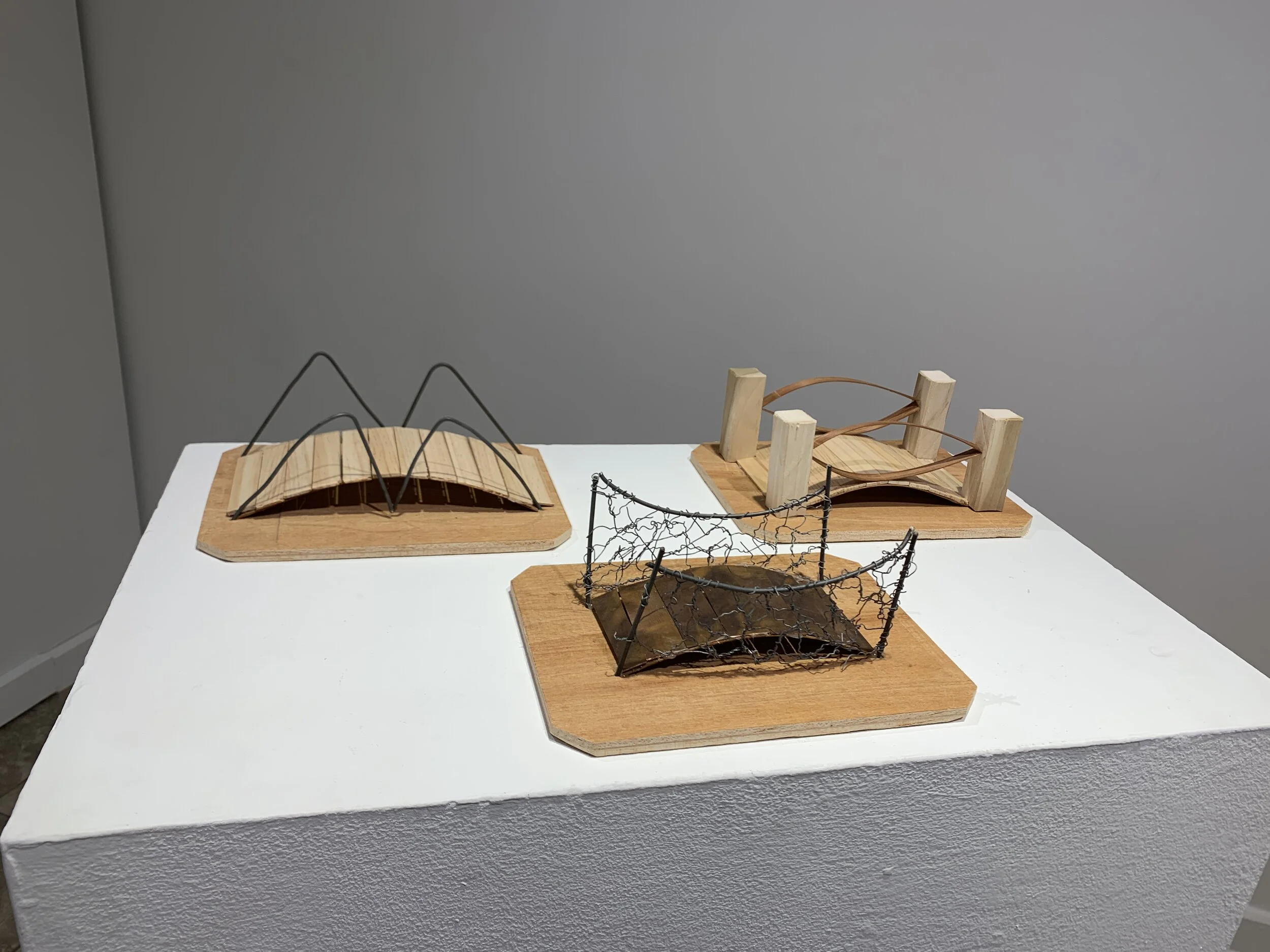


Various Projects, 2020-2021| Ben Bloom
Throughout this past year, I have been inspired to work with a variety of different mediums and practices. No matter what type of project I find myself involved in though, I feel that my tendencies of design are constantly bordering on craft. I have long felt that while it can be satisfying for an object to be beautiful for its own sake, I can never fully appreciate it if it is not a functional and practical addition to daily life.
Ceramics has been my primary medium for many years with a focus on pottery and functional wares. I feel pottery has been my root artistically and has given me the foundation to branch out into so many other forms of making. This year I have not always had access to a ceramics studio, and so have been forced to direct some of my creative energy elsewhere. Analog photography, woodworking, fiber arts projects have filled the void creatively, and I feel there is so much potential for expression through all these mediums in a variety of different ways.
I create things simply because I enjoy the process. Projects have always been an essential part of my life and play an important role in my well-being. Part of what I find so alluring about creating art is the opportunity to interact with the natural world. I strive to invite the organized chaos of nature into my work in order to bring nature into aspects of life where it may not commonly exist today. My pit-fired ceramic pots are a prime example of this. The surfaces of the pots are often complex and organic, created largely by chance in the firing. I add natural elements to the firing: seaweed, copper, salt, bones, feces, old fruit peels, leaves, wood ash and anything else I can find to burn. This technique is a fine balance between the artist's precise input and unbridled chaos. I feel that is where my work shines brightest.
My fiber arts projects called “tree nets” are also centered around active enjoyment of the natural world. Nets are a relatively young art form, originating from a type of environmental activism called “tree sitting”. Tree sitting is when activists stay for months at a time in the canopies of ancient California Redwood trees to prevent them from being cut down by lumber companies. Since it is hard to get comfortable in the tops of the natural giants without extensive supplies, tree nets became an elegant solution. Since then the tradition has grown on the west coast and even across the country, albeit in small pockets. Nets can serve many different purposes, sometimes they are small perches built to enjoy a view, sometimes they are large expansive spaces with hundreds of square feet intended for spending days camping in the canopy of the trees, other times they are fun recreational fixtures in a backyard. Ultimately though these nets are about appreciation of the natural world in a minimalist way, and I feel so grateful to have found this niche that allows me to create work in the old trees that I am so fond of. In a year when social contact has been harshly minimal, building nets has presented a safe and rewarding community for me.
Another project that I have been working on this year has been my newest truck camper. The camper was built with locally milled redwood boards and many salvaged parts from boatyards. The function of the camper is to allow me to spend as much time outdoors as comfortably as possible, and in a way that is aesthetically less of a clash with the natural world than a traditional aluminum camper.
This year has presented many challenges for me as it has for most people. I feel that creating things and working on projects has been a key part of what has gotten me through this year and given me a sense of purpose.

